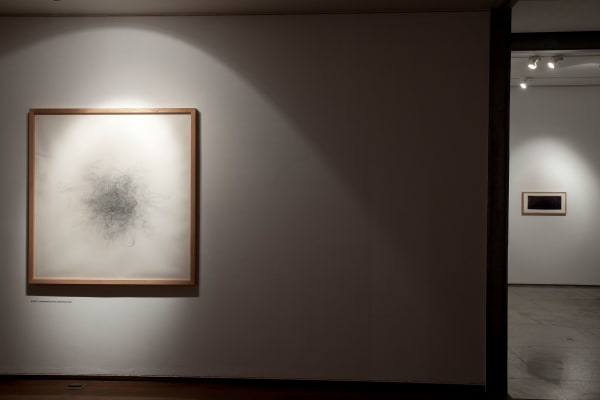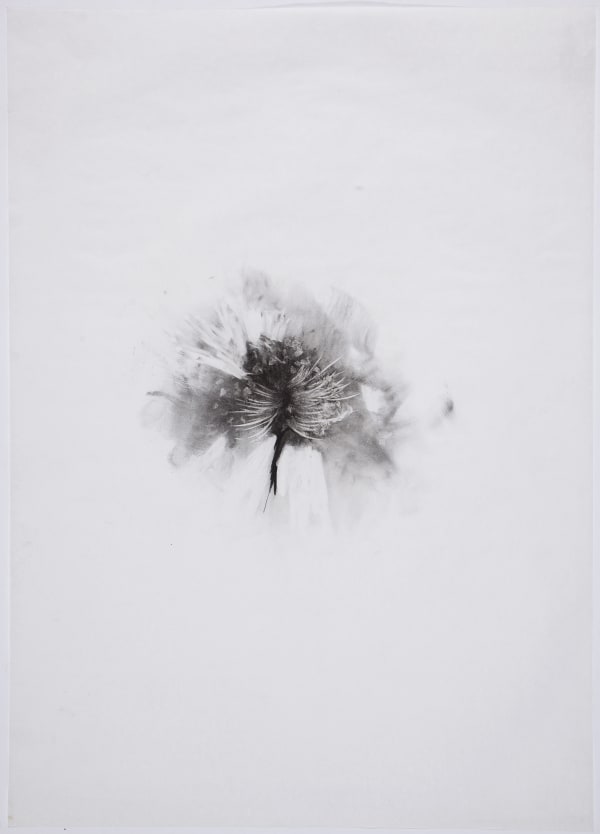Let it be a heaven of blackred roses: Aditi Singh
This interview is the culmination of a year long conversation conducted from New York, Mumbai and Florida. Between archivist to artist, this ongoing tète-à-tète documents discursively, the vagaries of artistic life and practice, in a way that is honest and reflective of actual life. Part-documentation, part-journal, part-palimpsest, In the Dark records interior moments that are partially hidden, obscured and revealed. This is the first interview in the In the Dark series.
AnS: I'd like to begin by talking about a recurring theme in your work-- the anatomy of flowers. How are they born and take us through your cognitive landscapes.
Aditi: I believe, even though there may be many exceptions, at a certain moment a form chooses you and won’t leave you in peace. It has been so with me. I have been drawing flowers for over a decade now and they continue to intrigue me. The flowers I am drawn to are not commonplace. They can only survive in extreme climates. They aren’t typically meant to decorate, to beautify. And I think perhaps that is what initially attracted me to them, the ephemeral yet tenacious nature of their existence.
The organic, geometric structure of the forms, the peeling away of the layers, carving out its composition, the fantastical quality of its presence in an unfamiliar environ; The language one begins to create is only the beginning of the discovery process. In attempting to draw them, I am only trying to measure the distance between the form and myself, waiting for the metamorphosis of the One into the Other.
Ultimately, what is I am searching for is a space in which the permanent and the ephemeral, real and imagined, darkness and light cease to be perceived as contradictions.
AnS: I'm very interested in exploring the interior world of motivation, of how certain decisions are made. When working purely with instinct, we don't stop to record these processes, b/c it is organic. Most artists don't want to stop to question either-- they don't want to break the flow.
On a personal level, i'm incredibly interested in the anatomy of artistic thought-- what are the hidden processes that motivate artists? What are they striving for?
Aditi: I find it very difficult to pin down a/the moment one begins to ‘create’, it’s a constant process of evolution/dissolution. I don’t stop making an image once I leave the studio. The mind is constantly imagining, taking things apart, rearranging. There are times when an entire image floats into my eyes and I can’t grasp its origins. As the author Murakami states in one of his novels, “sometimes I think that peoples minds are like deep wells. Nobody knows what's at the bottom. All you can do is imagine by what comes floating to the surface once in a while.”
AnS: There is a notable shift in scale in the work for your current body -- this brightness that falls from the stars, Blume, the darkness has a glow. Space is dense, form is not attenuated, and your mark making is textural, infinite and dark. Some of the rules have changed.
Aditi: Yes, the works in this show have great range. The scale of work shifts from the intimate to the immense. The largeness of an image is not determined by the size of the paper. I enjoy playing with dualities/contradictions. I want the viewer to move up close, to step back, to have an encounter with the work. Every movement of the body calls for a different mode of seeing.
Anita Sharma Webb is a visual arts archivist who specializes in South Asian modern and contemporary art.






